No. 19
Get rid of mice
Trap the ones you have and keep the others out
If you have mice, you need a short-term solution and a long-term defense. Simple snap traps are an effective way to eliminate the intruders. But also take steps to keep out the next wave of invaders.
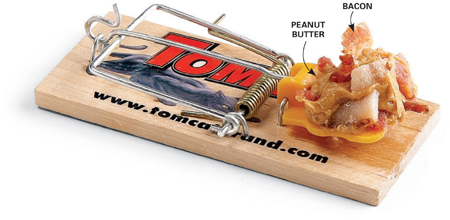
The best bait (it isn’t cheese)
Cheese isn’t on any mouse’s “top-10 list.” They’ll only eat it if nothing else is available. Plus, cheese hardens after sitting out for a while, making it easier for mice to take the bait without setting off the trap. The perfect bait is actually peanut butter or bacon, or a blend of peanut butter and bacon grease. Mice can’t resist the smell and taste. So wipe that on the trip mechanism to get the greatest number of catches.
Are snap traps cruel?
You might think that live trapping and releasing is more humane. But once released into new territory, mice (or other critters) usually die a slow death from starvation or exposure. Poison usually leads to a painful death, too. Snap traps, on the other hand, do the job quickly.
Don’t get mouse germs!
Before you sweep up mouse droppings, always spray them with a disinfectant spray such as Lysol. Mice can pass disease to humans through their waste.
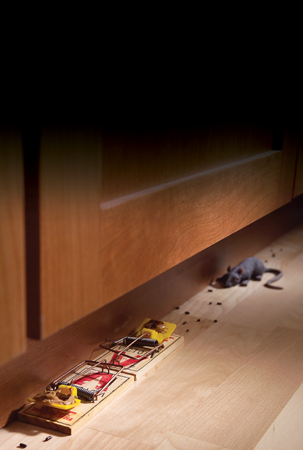
Use the right mousetrap technique
Snap-type mousetraps work—if you use them right.
• Place traps along walls in areas where you’ve seen the telltale brown pellets. Mice have poor vision and prefer to feel their way along walls.
• The best technique is to set two traps, parallel to the wall, with the triggers facing out. Mice sometimes jump over traps, but they can’t jump two.
• Set lots of traps. For an average-size house, two dozen mousetraps isn’t too many.
Eliminate easy entrances
Mice can slip through gaps as small as 1/4 in. For those gaps, acrylic latex caulk is a good filler. For gaps 1/4 in. up to 1/2 in., use polyurethane caulk. Expanding foam is a fast, convenient filler for anything wider or for areas where appearance doesn’t matter. For most cracks, “minimal expanding” foam is the easiest to use.
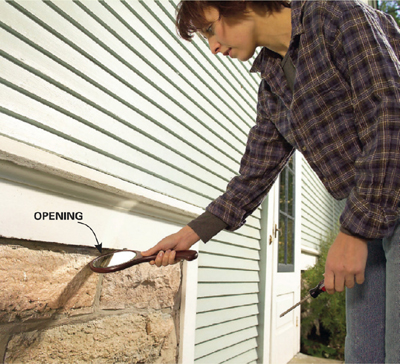
Check under the siding
Inspect the underside of your siding using a mirror. If you find a gap, mark the location with masking tape so you can seal it later.
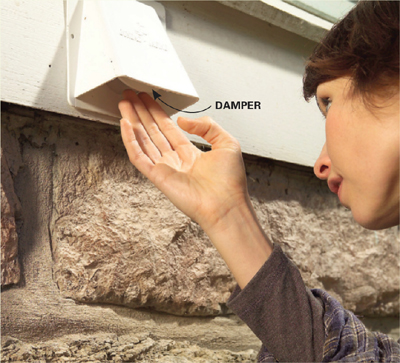
Check the dryer vent
Examine dryer vents to ensure the damper isn’t stuck open or broken off completely. Also check that the seal between the vent and the wall is tight.
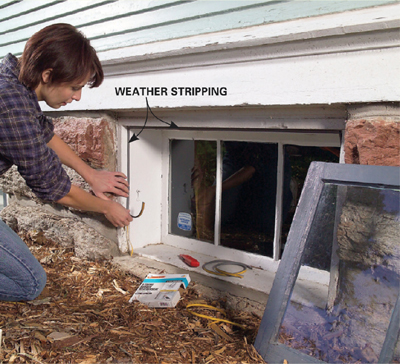
Seal gaps at door and windows
Seal doors, windows and basement sashes with adhesive-backed weather stripping. Clean the surface first so the weather strip will adhere well.
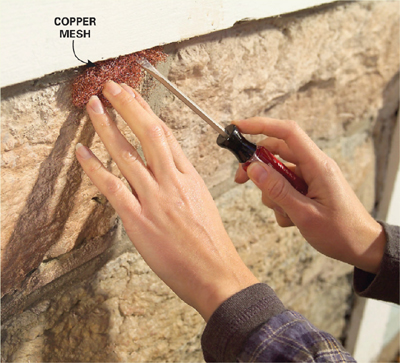
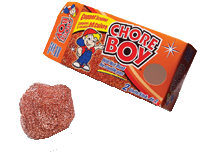
Plug gaps with mesh
Caulk or expanding foam usually keeps mice out. But sometimes, mice gnaw through them. For the ultimate mouse-proof seal, stuff copper scrubbing pads into gaps before sealing with caulk or foam.






